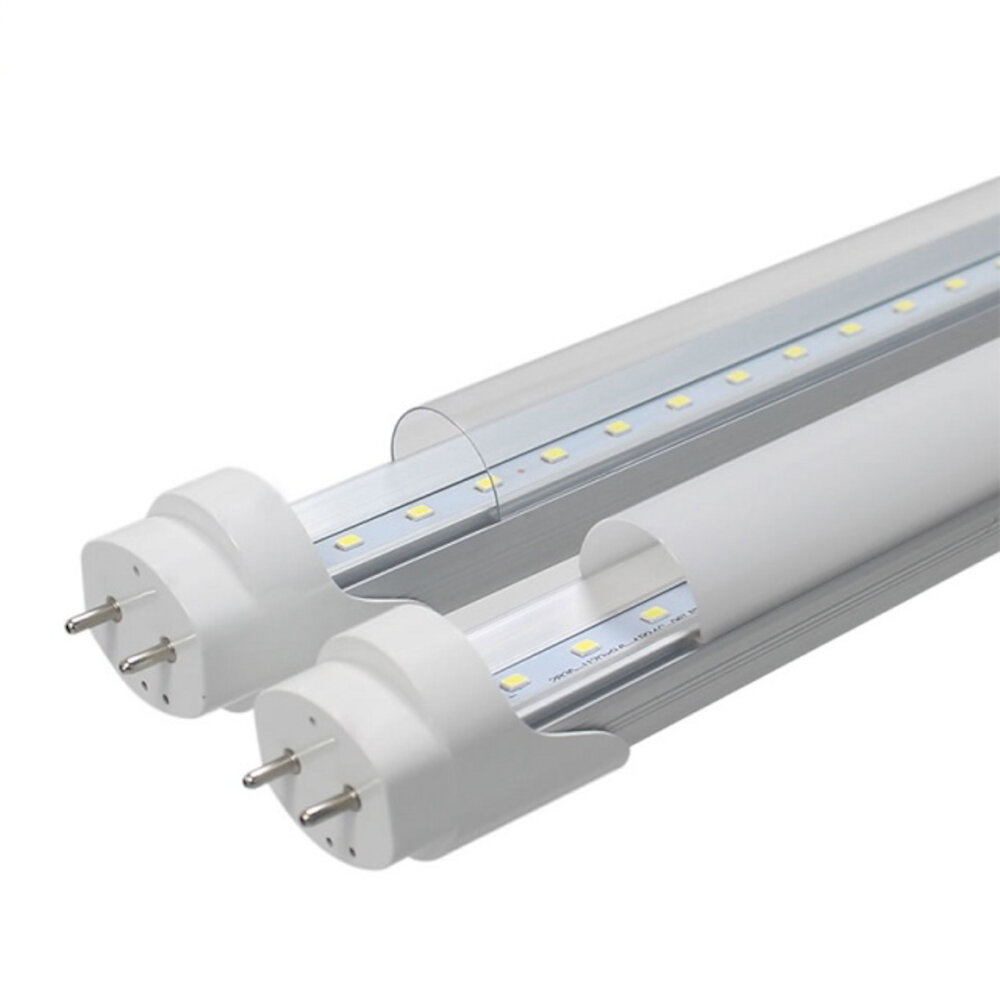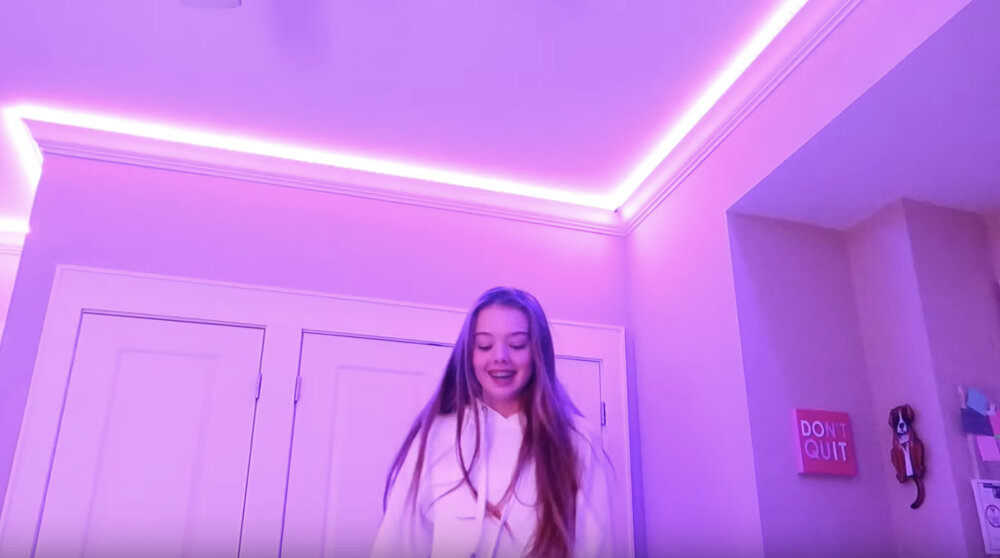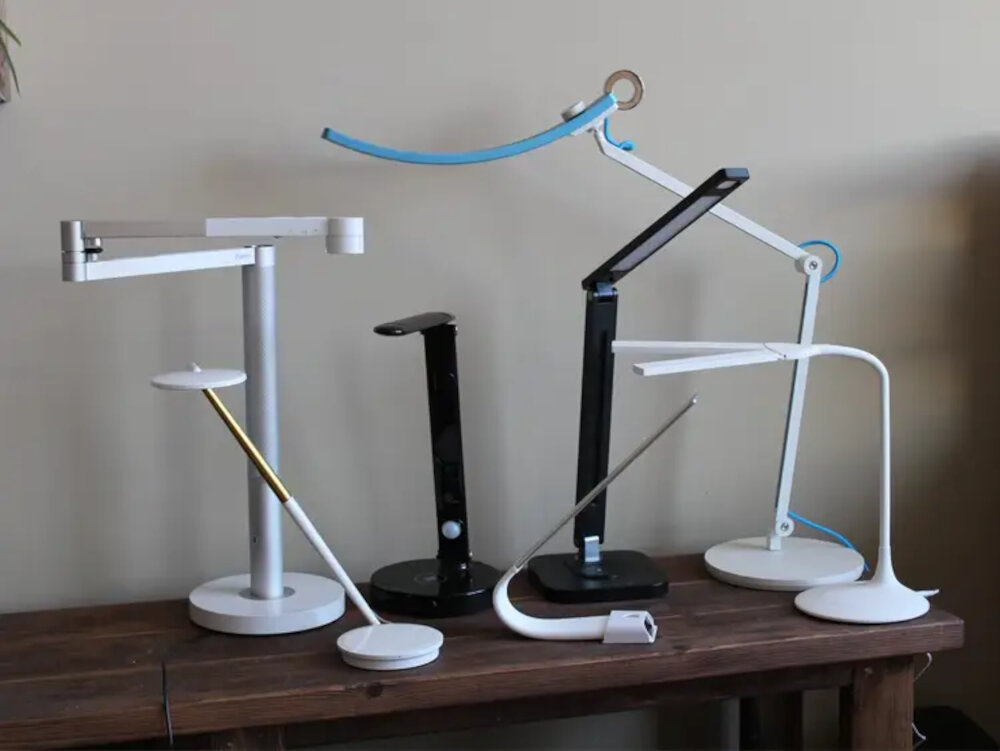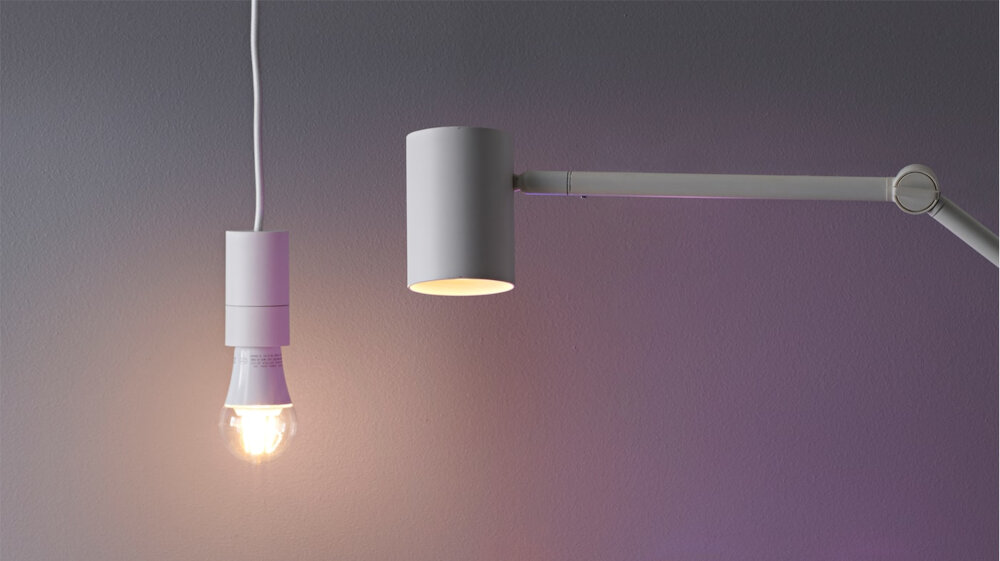Sleep Better: Discovering the Best LED Light Color for Your Bedroom

Getting a good night’s sleep is essential for maintaining good health and wellbeing. However, with the fast-paced lifestyle that many people lead today, it can be challenging to get the recommended eight hours of sleep every night. One way to improve your sleep quality is by creating a conducive sleep environment. This includes factors such as mattress comfort, room temperature, and lighting. While many people overlook the role of lighting in sleep quality, it is a crucial element that can make a significant difference. In this article, we will explore how the color of LED lights can affect your sleep and help you discover the best LED light color for your bedroom. Light is a crucial factor in regulating our sleep-wake cycle. It helps to signal to our brain when it’s time to sleep and when it’s time to wake up. However, not all types of light are created equal. The color of light can have a significant impact on our sleep quality. Blue light, which is emitted by most electronic devices, can suppress the production of melatonin, a hormone that regulates sleep. This can make it harder to fall asleep and stay asleep. On the other hand, warmer colors like red and orange can promote the production of melatonin and help us relax. By understanding the effects of different LED light colors on sleep, you can make informed decisions about your bedroom lighting and improve your sleep quality.
Sleep plays a crucial role in maintaining our physical, mental, and emotional well-being. Getting enough quality sleep not only leaves us feeling refreshed and energized but also helps improve memory, concentration, and overall productivity. Light, on the other hand, is a critical component that regulates our internal body clock and influences our sleep patterns. In particular, the blue light emitted by electronic devices such as smartphones and tablets can disrupt our circadian rhythm and lead to difficulties falling asleep or staying asleep. Therefore, choosing the right LED light color for your bedroom can significantly impact the quality of your sleep and help you wake up feeling rested and rejuvenated.
Understanding the Impact of Light on Sleep

Light has a significant impact on our sleep. Our bodies have an internal clock that regulates our sleep-wake cycle, also known as the circadian rhythm. This clock is influenced by a variety of cues, including light. Exposure to light, especially blue light, suppresses the production of melatonin, a hormone that regulates sleep. This means that exposure to light, especially in the evening, can make it more difficult to fall asleep and stay asleep. The impact of light on sleep is particularly important in the bedroom, where the lighting can make or break the quality of our sleep. The color of light is an important factor to consider when it comes to sleep. Blue light, which is emitted by electronic devices and energy-efficient light bulbs, is particularly problematic. Exposure to blue light in the evening can disrupt the production of melatonin and make it more difficult to fall asleep. On the other hand, warm-colored light, such as yellow or orange, is less likely to interfere with sleep. In fact, warm-colored light can be beneficial for sleep because it promotes the production of melatonin. By understanding the impact of light on sleep and choosing the right color of light for your bedroom, you can improve the quality of your sleep and wake up feeling more refreshed and energized.
Light plays a crucial role in regulating the body’s circadian rhythm, which is the internal clock that controls the sleep-wake cycle. Specifically, exposure to light, especially blue light, can suppress the production of melatonin, a hormone that helps induce sleep. This is why it is recommended to avoid bright screen time before bed, as it can disrupt the natural sleep cycle. On the other hand, exposure to warm, dim light can stimulate the production of melatonin and help promote relaxation and sleepiness. Therefore, choosing the right LED light color for your bedroom can improve the quality of your sleep and overall well-being.
The impact of light on our sleep cannot be overstated, and the wrong type of light can disrupt our sleep cycle. Blue light, for instance, has been found to suppress the production of melatonin – the hormone that helps regulate our sleep-wake cycle. This is because blue light mimics daylight and sends signals to our brain to stay awake. Exposure to blue light before bedtime can delay the onset of sleep and reduce the quality of our sleep, leaving us feeling groggy and less rested the next day. It is therefore crucial to choose the right type of light for your bedroom to ensure a good night’s sleep.
Choosing the right LED light color for your bedroom is of utmost importance for a good night’s sleep. The color temperature of the light affects the release of melatonin in the body, which is a hormone that regulates sleep. Blue and cool white lights have been found to suppress melatonin production, making it difficult to fall asleep and stay asleep. On the other hand, warm lights with a yellow or orange hue have a calming effect on the body, promoting relaxation and a deeper sleep. It is essential to take into account the purpose of the room and the individual preferences when selecting the LED light color. The perfect color can create a serene and peaceful ambiance, leading to a better sleep routine and overall well-being.
The Best LED Light Colors for Better Sleep

Getting a good night’s sleep is essential for our overall health and well-being, and the lighting in our bedroom can play a significant role in how well we sleep. LED lights have become a popular choice for bedroom lighting due to their energy efficiency and versatility. However, not all LED light colors are created equal when it comes to promoting restful sleep. The best LED light colors for better sleep are those that promote relaxation and help to regulate our circadian rhythm, which is our body’s natural sleep-wake cycle. One of the best LED light colors for better sleep is warm white. Warm white LED lights emit a soft yellowish glow that mimics the warm, natural light of the sun at sunset. This color temperature is known to promote relaxation and help to prepare our bodies for sleep. Warm white LED lights are also great for creating a cozy and inviting atmosphere in the bedroom, which can help to promote feelings of calm and relaxation. Additionally, warm white LED lights are less likely to interfere with our circadian rhythm, making them an excellent choice for bedroom lighting.
LED lights come in a wide range of colors, each with their unique benefits and drawbacks. Warm white LED lights are typically used for a cozy and relaxing ambiance, making them perfect for bedrooms. They have a yellowish hue that mimics the soft glow of candlelight, which can help reduce stress levels and promote a good night’s sleep. Cool white LED lights have a bluish tint and are typically used in workspaces or areas that require bright lighting. They are known to improve focus and concentration, making them ideal for studying or reading. Finally, there are colored LED lights that can be used to create an atmosphere in the bedroom, such as red for a romantic or calming effect, or blue for a serene and tranquil environment.
When it comes to promoting quality sleep, choosing the right LED light color can make a significant difference. Generally, blue light should be avoided as it can suppress melatonin production, the hormone responsible for regulating sleep. Instead, warmer colors such as yellow, orange, and red are recommended as they have a calming effect on the brain, promoting relaxation and sleepiness. Furthermore, dimming the lights can also signal to the body that it’s time to wind down and prepare for rest. So, if a good night’s sleep is what you’re after, consider investing in LED bulbs with warmer colors and dimming capabilities for your bedroom.
When it comes to selecting the right LED light color for your bedroom, there are several tips to consider. First and foremost, it’s important to choose a color that promotes relaxation and sleep. This means avoiding bright, harsh colors like cool white and blue, which can disrupt your circadian rhythm and make it harder to fall asleep. Instead, opt for warmer, softer hues like warm white or amber, which can create a more calming and soothing environment. Additionally, consider the brightness level of your chosen LED light color, as overly bright lights can also interfere with sleep. Finally, don’t be afraid to experiment with different colors and lighting setups until you find the perfect combination for your individual needs and preferences.
Using LED Lights to Enhance Bedroom Ambiance

The use of LED lights to enhance the ambiance of a bedroom has become increasingly popular as the benefits of LED lighting are becoming more widely recognized. LED lights offer a range of color options and brightness levels that can be customized to suit individual preferences and needs. In particular, the color temperature of LED lights can have a significant impact on the quality of sleep and overall mood of a person. Choosing the right LED light color for your bedroom can create a peaceful and relaxing atmosphere that promotes better sleep and helps you wake up feeling refreshed. When considering the use of LED lights in your bedroom, it is important to choose colors that promote relaxation and calmness. Soft warm colors such as yellow, orange, and red are ideal for creating a cozy and comfortable environment that induces sleep. On the other hand, cooler colors such as blue and green can create a calming and soothing atmosphere that promotes relaxation and reduces stress. It is also important to consider the brightness level of LED lights as well, as excessively bright lights can disrupt sleep patterns and cause eye strain. Overall, with a little bit of experimentation and customization, LED lights can be used to create a personalized and comfortable bedroom environment that promotes restful sleep and a positive mood.
LED lights are an excellent way to create a relaxing and peaceful bedroom environment. The color temperature of LED lights can be adjusted to mimic the natural light spectrum, helping to regulate your body’s natural sleep-wake cycle. Warm white LED lights create a cozy and inviting atmosphere, while cool white LED lights can make a room feel more spacious and airy. Additionally, LED lights can be dimmed to the perfect level of brightness, promoting relaxation and reducing eye strain. By using LED lights to create a calming and tranquil bedroom environment, you can improve the quality of your sleep and wake up feeling refreshed and energized.
The right LED light color combinations can significantly enhance the ambiance of your bedroom and positively impact your sleep quality. For instance, warm white light creates a calming and relaxing environment, making it ideal for winding down before bed. Natural white light can mimic daylight and provide a refreshing and energizing feeling, which is perfect for a morning boost. Additionally, blue light can suppress melatonin production and disrupt your sleep cycle, so it is best to avoid it before bedtime. However, blue light can be useful for creating a tranquil and soothing atmosphere when paired with warm white light. Ultimately, experimenting with different LED light color combinations can help you find the perfect balance to create a comfortable and peaceful bedroom environment that promotes better sleep.
LED lights have become more popular in homes due to their energy efficiency, but they can also have an impact on our sleep quality. To use LED lights effectively for better sleep, it is important to choose the right color temperature. Blue light, which is often emitted by LED lights, can suppress the production of melatonin, a hormone that regulates sleep. Therefore, it is recommended to use warmer color temperatures, such as 2700K or 3000K, which mimic the color of traditional incandescent bulbs and have a calming effect. It is also important to avoid using bright LED lights before bedtime, as they can disrupt the body’s natural circadian rhythm. Dimming the lights or using warm-colored nightlights can help create a relaxing environment for better sleep.
Other Tips for Better Sleep

Getting quality sleep is essential for optimal health and well-being. While finding the right LED light color for your bedroom can be helpful, there are other tips you can follow to improve your sleep quality. Firstly, establish a regular sleep schedule, even on weekends. Your body has an internal clock that regulates your sleep-wake cycle, and irregular sleep patterns can disrupt this clock, making it harder to fall asleep or wake up. Additionally, avoid naps during the day, especially in the late afternoon or evening, as this can also disrupt your sleep schedule. Secondly, create a relaxing bedtime routine to help you unwind before sleep. This could involve taking a warm bath, reading a book, or practicing relaxation techniques such as meditation or deep breathing. Avoid using electronic devices such as smartphones or laptops before bed as the blue light emitted from these devices can suppress melatonin production, making it harder to fall asleep. Lastly, make sure your bedroom is conducive to sleep, by keeping it cool, quiet, and dark. Investing in blackout curtains or earplugs can be helpful if you live in a noisy area or are sensitive to light. By following these additional tips, you can improve your sleep quality and wake up feeling refreshed and energized.
In addition to using the right LED light color, there are many other steps that you can take to improve the quality of your sleep. First, establish a regular sleep schedule by going to bed and waking up at the same time each day. This helps regulate your body’s natural sleep-wake cycle. Second, create a relaxing bedtime routine to wind down before sleep. This could include reading a book, taking a warm bath or practicing relaxation techniques such as deep breathing or meditation. Third, ensure your sleeping environment is comfortable and conducive to sleep. This means keeping your bedroom cool, quiet and dark, and investing in a comfortable mattress and pillows. Fourth, avoid caffeine, alcohol and nicotine before bed as they can disrupt sleep. Finally, limit screen time before bed as the blue light emitted by electronic devices can suppress the production of melatonin, a hormone that promotes sleep. By implementing these strategies, you can improve your sleep quality and wake up feeling refreshed and energized.
Temperature, noise, and other factors, such as light exposure, are essential components that have a significant impact on the quality of sleep. Temperature, for instance, plays a vital role in regulating the body’s circadian rhythms and inducing sleep. A bedroom that is too warm or too cold can disrupt one’s sleeping patterns and affect overall sleep quality. Similarly, noise pollution, such as traffic or loud music, can disrupt sleep and cause sleep fragmentation, leading to daytime fatigue and sleepiness. Therefore, it’s essential to pay attention to these environmental factors and make adjustments accordingly to achieve better sleep quality. Choosing the right LED light color for your bedroom can also positively contribute to your sleep quality, as it can help regulate your body’s production of melatonin, a hormone responsible for promoting sleep.
Creating an optimal sleep environment is essential for getting a good night’s rest. One of the most important factors is lighting. To create a relaxing and sleep-friendly atmosphere, it’s best to avoid bright, blue light. Instead, opt for warm, soft hues like red, orange or yellow, which can help to promote relaxation and ease into sleep. Additionally, it’s important to keep the temperature cool but comfortable, around 60-67°F, and make sure your bed is comfortable and supportive. Lastly, minimize noise and distractions by using earplugs, white noise machines or soundproof curtains. By implementing these tips, you’ll be well on your way to a better night’s sleep.
Choosing the right LED light color for your bedroom is crucial for a good night’s sleep. The human body is designed to respond to light, and its color temperature can affect our circadian rhythm, which controls our sleep-wake cycle. Blue light, for example, suppresses the production of melatonin, a hormone that helps us sleep, making it harder to fall asleep. On the other hand, warm light, such as yellow or orange, has a calming effect on the body and can promote relaxation, making it easier to sleep. Therefore, it is important to choose warm LED light colors for your bedroom to create a relaxing and calming environment that promotes restful sleep.
The quality of sleep is greatly influenced by the lighting in your bedroom, and the color of the LED light plays a vital role in promoting sound sleep. Research indicates that blue light, commonly found in electronic devices, suppresses the production of melatonin, the hormone responsible for regulating sleep-wake cycles. Therefore, it is recommended to avoid blue light in bedrooms and opt for warmer colors such as yellow, orange, or red, which have a calming effect and promote relaxation. The color temperature of LED lights should be around 2700K to 3000K, mimicking the warm glow of a sunset, and creating a soothing atmosphere in the bedroom. Additionally, dimming the lights in the evening can also help signal the body to produce melatonin and prepare for sleep.
To fully maximize the potential of LED lights in improving sleep quality, here are some final tips to consider. First, make sure to choose warm or neutral-colored LED bulbs with a color temperature of 2700-3000K to promote relaxation and melatonin production. Second, install dimmer switches or use lamps with adjustable brightness to create a calming and soothing atmosphere before bedtime. Third, avoid blue light exposure at least an hour before sleep to prevent disruption of the circadian rhythm. Lastly, be consistent with your LED light usage to establish a healthy sleep routine and reap the benefits of improved sleep quality. By following these tips, you can create a sleep-friendly environment that promotes relaxation and restful sleep.
Conclusion

In conclusion, the color of LED lights in your bedroom can have a significant impact on the quality of your sleep. By choosing the right color temperature, you can create a relaxing and comfortable atmosphere that promotes restful sleep. Blue and cool white light should be avoided before bedtime, while warm white or amber light can help induce sleep. It is important to experiment with different light colors and find the one that works best for you. With a little experimentation and some simple changes, you can transform your bedroom into a sleep-friendly environment that promotes better health and well-being. So, start today and experience the difference that the right LED light color can make to your sleep.




